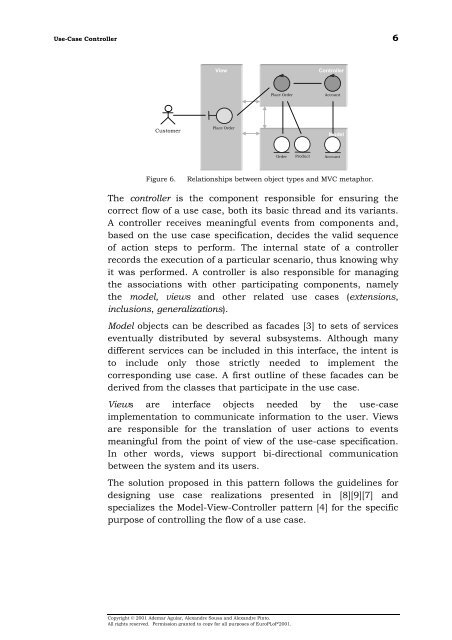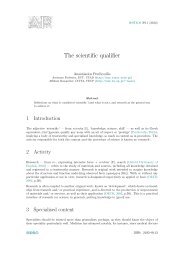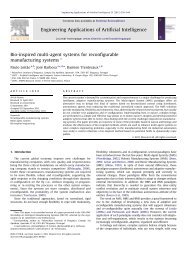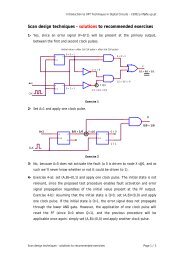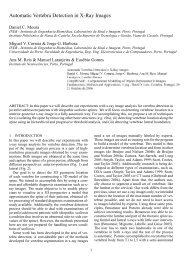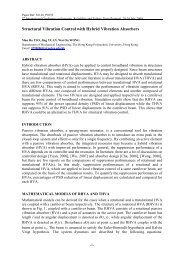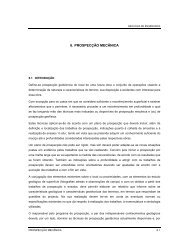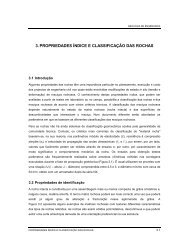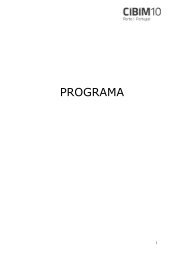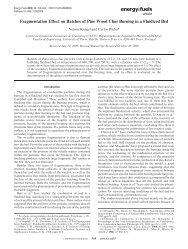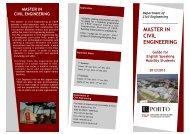Use-Case Controller
Use-Case Controller
Use-Case Controller
You also want an ePaper? Increase the reach of your titles
YUMPU automatically turns print PDFs into web optimized ePapers that Google loves.
<strong>Use</strong>-<strong>Case</strong> <strong>Controller</strong> 6<br />
View<br />
<strong>Controller</strong><br />
Place Order<br />
Account<br />
Customer<br />
Place Order<br />
Model<br />
Order Product Account<br />
Figure 6.<br />
Relationships between object types and MVC metaphor.<br />
The controller is the component responsible for ensuring the<br />
correct flow of a use case, both its basic thread and its variants.<br />
A controller receives meaningful events from components and,<br />
based on the use case specification, decides the valid sequence<br />
of action steps to perform. The internal state of a controller<br />
records the execution of a particular scenario, thus knowing why<br />
it was performed. A controller is also responsible for managing<br />
the associations with other participating components, namely<br />
the model, views and other related use cases (extensions,<br />
inclusions, generalizations).<br />
Model objects can be described as facades [3] to sets of services<br />
eventually distributed by several subsystems. Although many<br />
different services can be included in this interface, the intent is<br />
to include only those strictly needed to implement the<br />
corresponding use case. A first outline of these facades can be<br />
derived from the classes that participate in the use case.<br />
Views are interface objects needed by the use-case<br />
implementation to communicate information to the user. Views<br />
are responsible for the translation of user actions to events<br />
meaningful from the point of view of the use-case specification.<br />
In other words, views support bi-directional communication<br />
between the system and its users.<br />
The solution proposed in this pattern follows the guidelines for<br />
designing use case realizations presented in [8][9][7] and<br />
specializes the Model-View-<strong>Controller</strong> pattern [4] for the specific<br />
purpose of controlling the flow of a use case.<br />
Copyright © 2001 Ademar Aguiar, Alexandre Sousa and Alexandre Pinto.<br />
All rights reserved. Permission granted to copy for all purposes of EuroPLoP’2001.


